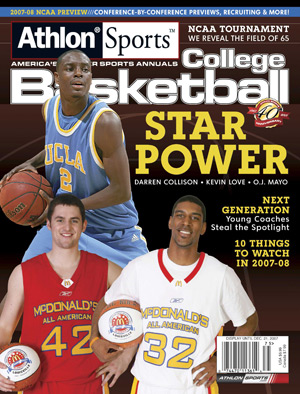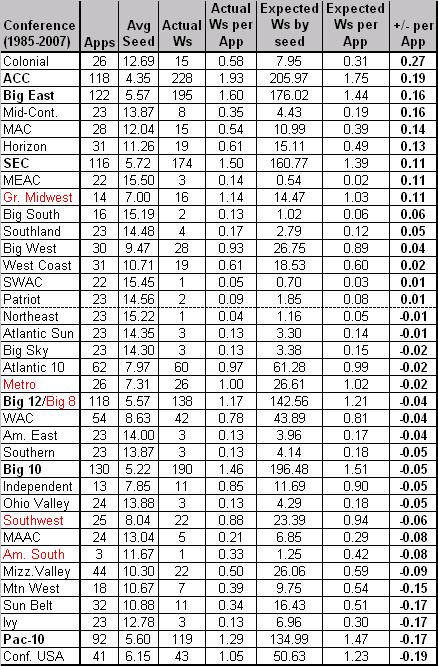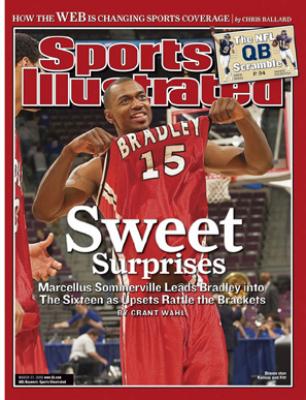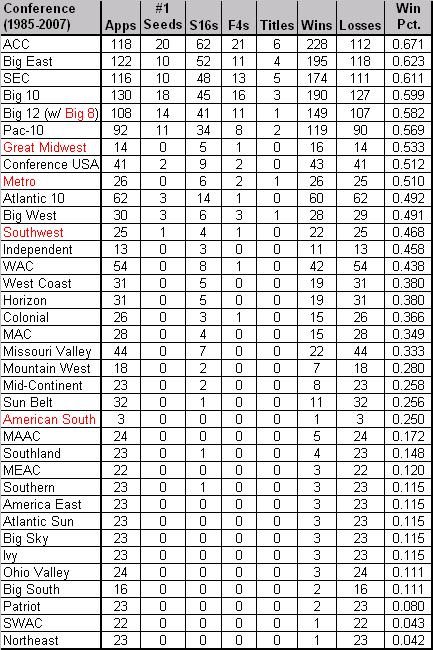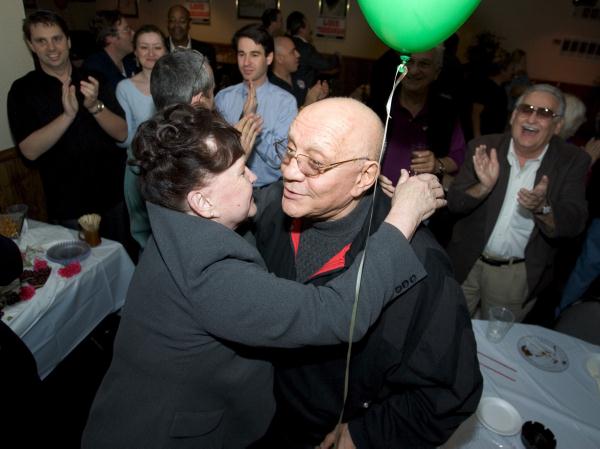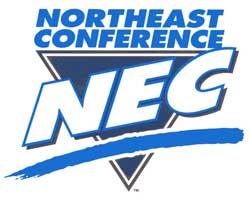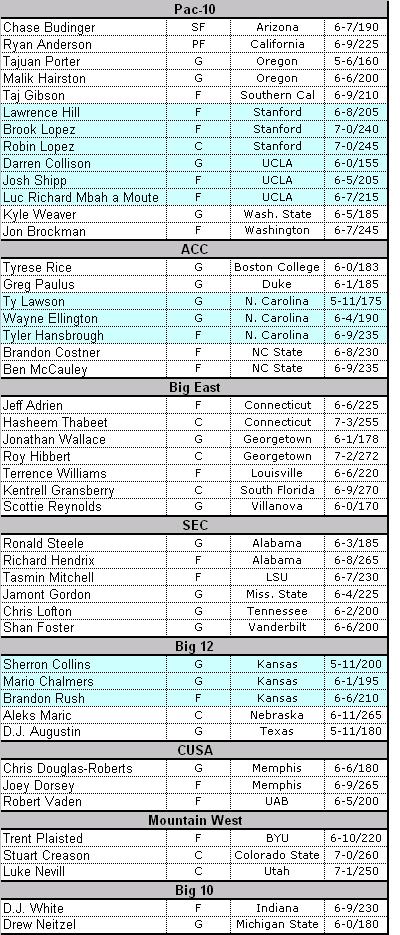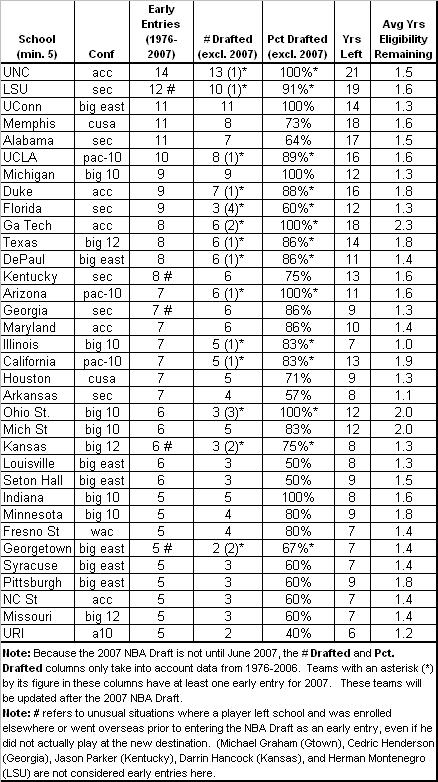Conference Challenges, Invitationals & Hardwood Series
Posted by rtmsf on September 27th, 2007Now that schedules are out, we thought it was worth a quick look at the new so-called conference challenges that are set to begin this year. We already know about the ACC’s annual emasculation and disembowelment of the Big very small 10 Conference, but we will recap that one too while we’re on the topic.
Big East / SEC Invitational
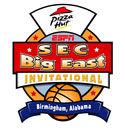
The Big East, having played in this sort of made-for-tv event once before (the ACC/Big East Challenge from 1989-91 resulted in an evenly split 12-12 record), has decided that it wants to show its wares against the SEC these days. This is a noble pursuit inasmuch as the two leagues have equalized in power over the last 15 years, with the Big East falling and the SEC rising. The confounding problem with this event is that it only involves four games annually and ESPN determines the matchups. While at first blush we thought this might be a good thing – visions of UConn-Florida, Kentucky-Syracuse, Tennessee-Georgetown and LSU-Seton Hall were dancing through our heads (ok not so much on the last one) – but upon actual review of this year’s schedule, we have to wonder if this will be worth our time at all.
December 5 (Birmingham Jefferson Civic Center; Birmingham, Ala.)
7:00 p.m. West Virginia vs. Auburn – ESPN2
9:30 p.m. Georgetown vs. Alabama – ESPN
December 6 (The Wachovia Center; Philadelphia, Pa.)
7:00 p.m. South Carolina vs. Providence – ESPN2
9:30 p.m. LSU vs. Villanova – ESPN
Out of this group, we see what, maybe one or two NCAA Tournament teams (Georgetown and who? Villanova or WVU?). Sure, Bama losing Ronald Steele couldn’t be anticipated, but what’s up with choosing last year’s SEC bottom dwellers Auburn, LSU and South Carolina? Is the SEC willfully trying to lose these games?
Big 12 / Pac-10 Hardwood Series
So that brings us to the other new conference challenge, which is slated to pit the Big 12 and Pac-10 against each other. This challenge mimics the ACC-Big 10 version in that every team will participate, and some even twice (Arizona & Stanford this year). Also, teams will play at home arenas rather than neutral sites, which ultimately makes early-season games more exciting.
Thurs., Nov. 29, 2007
8:00 p.m. Oregon at Kansas State – ESPN2
10:00 p.m. Oklahoma at USC – FSN
Fri., Nov. 30, 2007
8:00 p.m. Washington State at Baylor – ESPNU
10:00 p.m. Iowa State at Oregon State – FSN
Sat., Dec. 1, 2007
4:30 p.m. Washington at Oklahoma State – ESPN
10:00 p.m. Missouri at California – FSN
Sun., Dec. 2, 2007
2:00 p.m. Arizona State at Nebraska – ESPNU
2:00 p.m. Stanford at Colorado – ESPN2
5:00 p.m. Texas A&M at Arizona – FSN
7:00 p.m. Texas at UCLA – FSN
Outside the 10-game series window:
7:oo p.m. Arizona at Kansas (Sun., Nov. 25) – ESPN
3:30 p.m. Stanford vs. Texas Tech (Sat., Dec. 22) – ESPN2
Now that’s more like it. There are seven legitimately good games in this group, and a couple of them are potential blockbusters (Texas-UCLA and Arizona-Kansas). Furthermore, this could go a long way toward improving the schedule strength of these two conferences, both of which have traditionally been lower among the BCS conferences.
ACC / Big 10 Challenge
And now for the annual event where the ACC has not only won but dominated the Big 10 for eight years running. 48 wins, 27 losses. This year should be no different. Even though the ACC is a little down from last season, the Big 10 is a lot down, and we see no more than four wins from our midwestern friends this year.
Monday, Nov. 26
7:00 p.m. Wake Forest at Iowa – ESPN2
Tuesday, Nov. 27
7:00 p.m. Georgia Tech at Indiana – ESPN
7:30 p.m. Minnesota at Florida State – ESPN2
7:00 p.m. Northwestern at Virginia – ESPNU
9:00 p.m. Wisconsin at Duke – ESPN
9:30 p.m. Purdue at Clemson – ESPN2
Wednesday, Nov. 28
7:00 p.m. N.C. State at Michigan State – ESPN
7:30 p.m. Illinois at Maryland – ESPN2
7:00 p.m. Boston College at Michigan – ESPNU
9:00 p.m. North Carolina at Ohio State – ESPN
9:30 p.m. Virginia Tech at Penn State – ESPN2
A couple of final thoughts on these conference challenges. We’d like to see more conferences get involved with this, even if only the top few teams in the mid-major conferences were playing other top teams. A Missouri Valley/WCC or CAA/A10 challenge would be really instructional for considering mid-majors in March – a little like BracketBusters but more comprehensive.
Additionally, it should be a really fun ten days after the Thanksgiving weekend settling in each night for these games. The Big East and SEC have got to give us some better matchups, though.





























